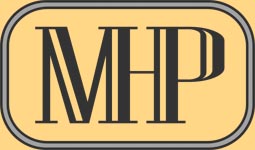Guise, Jean François de - Trio piccolo per due fagotti e controfagotto op. 25, Nr. 4

€14.00*
Available, delivery time: 1-3 days
Product information "Guise, Jean François de - Trio piccolo per due fagotti e controfagotto op. 25, Nr. 4"
Guise Jean François de
Trio piccolo per due fagotti e controfagotto
op. 25, No. 4
The term "Trio piccolo", which the composer Jean François de Guise uses, and not the usual term, "Trio basso", refers exclusively to the miniature-like form of the work. The subtitle, “per due fagotti e controfagotto” (for two bassoons and double bassoon), underlines this even more.
In the field of trio compositions, the trio basso belongs to a form that generally dispenses with a soprano instrument and is composed only from the middle of the sound. It is most common in the instrumentation viola, violoncello and double bass.
The "Trio piccolo per due fagotti e controfagotto op.25, No. 4" by Jean François de Guise is nevertheless a special form of the trio bassos, since it only uses bass instruments.
The choice of two bassoons and the contrabassoon came about at the suggestion of one of his friends, Stefan Siebert, who was the principal bassoonist of the Anhaltische Philharmonie Dessau at the time, who commissioned the work in 2008 and performed it himself several times with great success.
Small and large sixths, which initially form the basis of the composition, form a floating, warm sound, which is initially replaced by a recurring sixteenth-note motif, only to end again in recumbent chord constructions.
If you look at the Andante, which begins in the middle part, as the second movement, the idea of a classical sonata automatically comes to mind. This approach is reinforced in the Poco mosso.
The sixteenth-note motif begins again here, quoting the “first sentence” and branching out the original structure. The following Lento is reminiscent of the melting sounds of the beginning, but now much more lyrical, which is also expressed in the playing instruction molto lirico.
Jean François de Guise, whose free-tonal way of composing otherwise prefers dissonant sounds, ends this part in an unheard-of, annoying consonance, a pure C major chord.
Like the final movement of a sonata, the composer puts all known motifs in relation to one another, allows new constellations and finally allows the piece to end in an unresolved triad.
2 bassoons, contrabassoon
Score & parts / 19 pages
| Composer:: | Guise, Jean François de |
|---|---|
| Instrumentations:: | Trios, Trios für Bläser, Wind trio |
| Issue type:: | New edition |






